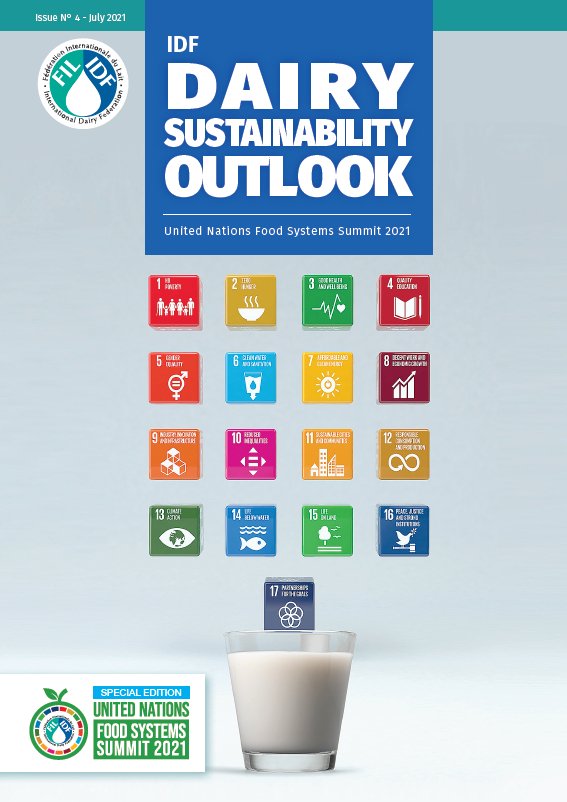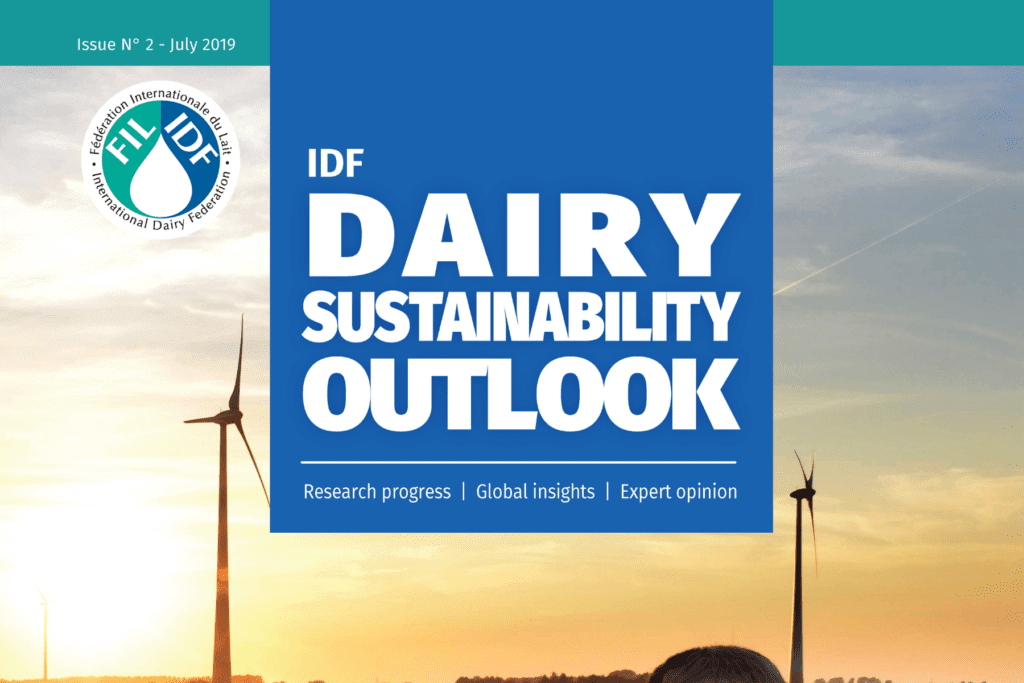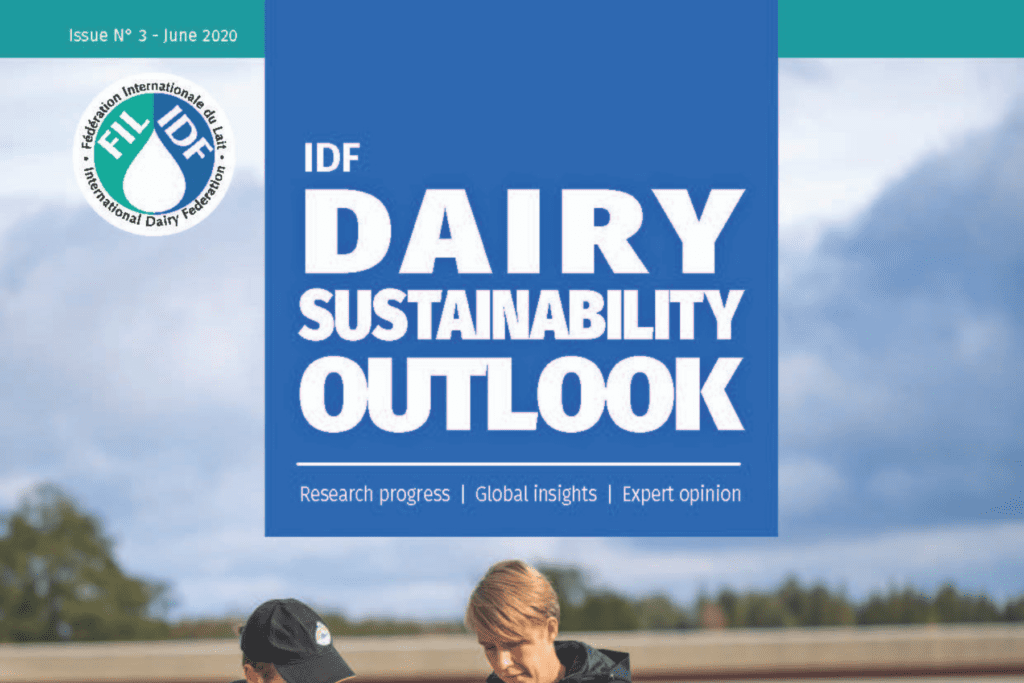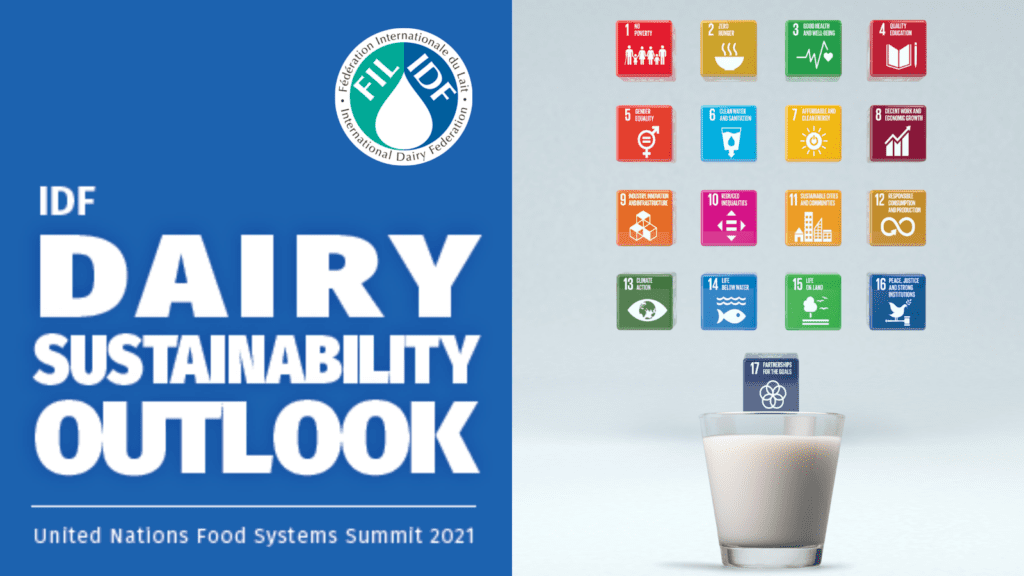Goals in Action
Sharing practical experience and resources from around the world
Share this page
Our Goals In Action showcase case studies from all over the globe, and how they contribute to the relevant UN Sustainable Development Goals. Click on the SDG buttons below to read the articles
“End hunger, achieve food security and improved nutrition and promote sustainable agriculture”
As world population need for nutritious food is expected to continue to grow significantly in the next decades, dairy will continue to provide a significant portion of people diets and to expand its production in all parts of the world. Billions of people worldwide rely on dairy for nutrition daily. Strong scientific evidence supports the critical role of milk and dairy foods in global nutrition and health. In countries where high-quality protein sources are scarce for vulnerable populations, dairy is an affordable nutrient dense food, and plays a vital role in making high-quality nutrition accessible. Although dairy provides important nutrition through the life course, it is particularly important for nourishing children, and at least 160 million children around the world currently receive and benefit from dedicated school milk programs. The versatility and affordability of milk and dairy products allows for varied use and incorporation into most dietary patterns and across different cultures around the world
Contribution of School Milk Program to provide enough dairy to children
Zambia: Introducing Milky Boost
Dahi-based Spread (2018)
Dairy Sustainability Tool (2018)
Demonstrating dairy’s positive impact from farm to table (2019)
Empowering the dairy sector through the Livestock Environmental Assessment and Performance (LEAP) Partnership (2018)
Ready-To-Eat Dairy-based Meal (2018)
Sustainability as the engine of the Chilean dairy sector (2019)
SAI Platform: dairy supply-chain collaborating to shift sustainability performance on farm (2019)
Climate change joint action plan on primary sector emissions (He Waka Eke Noa) (2020)
Dairy Council of California, Lets eat healthy movement (2020)
Milky way to development – Arla’s commitment to sustainable dairy development (2020)
Focus on nutrient loss on dairy farms – Greppa Näringen (2020)
The important role of quality education in the sustainable development of dairy in China (2020)
The Australian Dairy industry’s sustainability commitments in action (2021)
GAIN Access to Better Dairy project (2021)
The Australian Dairy industry’s sustainability commitments in action (2022)
A robotic facility for 250.000 Cheese wheels (2022)
Animal Welfare – Innovations in animal-based approach in Dutch dairy farming (2022)
Using the sun to cool the milk (2022)
Determining the pathway to net zero for Dutch dairy (2022)
“Ensure healthy lives and promote well-being for all at all ages”
Dairy products are an important component of diets that are consistent with long term health, preventing or minimizing certain diseases (e.g., osteoporosis) or nutrient deficiencies (e.g., stunting), and simply providing variety and pleasure.The great variety of dairy foods are adaptable to the global palate and its array of cultural and other food preferences. Dairy is a staple food with traditions deeply woven into societies all around the world, and in our country. Billions of people worldwide rely on dairy for nutrition daily. Dairy products are naturally nutrient dense foods, supplying significant amounts of high-quality protein and micronutrients, including calcium, magnesium, selenium, riboflavin, and vitamins B5 and B12.
Indicators
Quantitative indicators:
- Percentage of countries that recommend dairy in diets.
- Percentage of population that consume recommended servings of dairy.
Case studies
Contribution of School Milk Program to provide enough dairy to children
- Zambia: Introducing Milky Boost
Dahi-based Spread (2018)
Empowering the dairy sector through the Livestock Environmental Assessment and Performance (LEAP) Partnership (2018)
Ready-To-Eat Dairy-based Meal (2018)
Summer supplementation of dairy cows with Turnip and Rape (2018)
The Sustainable Dairying – Water Accord (2018)
A case study on milk fortification for improved nutrition in India (2019)
Continuous improvement with the dairy sector (2019)
Demonstrating dairy’s positive impact from farm to table (2019)
Enhancing participation of women dairy farmers in governance and management of dairy cooperatives (2019)
Sustainability as the engine of the Chilean dairy sector (2019)
Workplace action plan for sustainable dairying (2019)
A robust manure vale chain – strengthening livelihood security of small holder dairy farming systems (2020)
The important role of quality education in the sustainable development of dairy in China (2020)
8% less added sugar in Belgian dairy products (2020)
Initiatives to reduce salt in cheese and added sugar in sweetened dairy products in the Netherlands (2021)
The Australian Dairy industry’s sustainability commitments in action (2021)
Animal Welfare – Innovations in animal-based approach in Dutch dairy farming (2022)
A robotic facility for 250.000 Cheese wheels (2022)
The Australian Dairy industry’s sustainability commitments in action (2022)
Moving forward to Net-Zero Dairy to fight climate change (2022)
Australia adds genetics to emissions toolkit (2022)
“Ensure sustainable consumption and production patterns”
Positive contributions of dairy on the environment need to be taken into consideration and promoted. Dairy farmer stewardship of natural resources results in environmental benefits.
- Approximately 70 percent of agricultural land is regarded as marginal land that becomes part of a productive food system when it is grazed by cattle and other animals.
- Moreover, 86% of global livestock feed is not human edible. Dairy cattle upgrade inedible plants, and industry by-products into high quality protein for people.
- Dairy also provides raw material for renewable energy (manure), thus contributing to the renewable energy transition.
- Throughout centuries, nomadic and pastoral dairy farming have contributed to the development of civilization providing nutritious products. Dairy farmers and producers have always been operating as responsible stewards of the natural resources necessary for their production of milk and dairy products.
- Production of milk and dairy products is part of a natural process and as such is not only using natural resources but also providing “services” to the land on which it operates. It is what is called “Ecosystem Services” and it does contribute to the overall equilibrium of nature. However, this aspect of livestock production and related positive benefits are rarely considered when evaluating the impact of dairy production food systems.
Indicators
- Farm Level | Implementation of a Waste Management Plan
- Processor Level | Mass of waste to landfill per year
Case studies
The use of buffer zones for the improved management of watercourses on dairy farms in South Africa (2022)
Ammonia volatilisation following surface application of dairy slurry and urea on permanent on grasslands of Southern Chile (2018)
Co-composting of residual fats from the dairy industry separated by a dissolved air flotation equipment (DAF) (2018)
Dairy Product Environmental Footprint: achievements, challenges, and opportunities (2018)
Dairy Declaration of Rotterdam showing progress (2018)
Dairy Sustainability tool (2018)
Empowering the dairy sector through the Livestock Environmental Assessment and Performance (LEAP) Partnership (2018)
Eco-friendly, resource-conserving food and feed production (2018)
Summer supplementation of dairy cows with Turnip and Rape (2018)
Continuous improvement with the dairy sector (2019)
Dairy strategy on food loss and waste (2019)
Demonstrating dairy’s positive impact from farm to table (2019)
Dairy changes its milk bottle to support the local recycling market (2019)
Maintaining and enhancing biodiversity on dairy farms – the eurodairy project (2019)
Sustainability as the engine of the Chilean dairy sector (2019)
FAO/LEAP: Nutrient flows and associated environmental impacts – guidelines for assessment in livestock supply chains (2019)
FAO/LEAP: Assessment of livestock impacts on biodiversity (2019)
Maintaining and enhancing biodiversity on dairy farms – the eurodairy project (2019)
Workplace action plan for sustainable dairying (2019)
SAI Platform: dairy supply-chain collaborating to shift sustainability performance on farm (2019)
Application of the principles of the Israeli model for sustainable dairy production in the tropical region of Colombia (2020)
Arla Foods extends cooperation to dairy farming in China (2020)
Dairy Council of California, Lets eat healthy movement (2020)
Eco-efficiency of irrigated dairy pastures in South Africa (2020)
Milky way to development – Arla’s commitment to sustainable dairy development (2020)
Journey towards negative net carbon emissions on dairy farms by building carbon sinks (2020)
Strengthen the criteria for managing wash water on dairy farms (2020)
The Committee for Milk Container Environmental Issues (COMCEI) (2020)
Dairy farming-Vital for biodiversity and sustainable local value chains (2020)
Action plan for a climate resilient dairy sector (2020)
Turning the tide on plastic pollution – Ambitions from the dairy sector (2020)
Dairy is working together to be an environmental solution (2020)
U.S. Dairy net zero initiative – actionable pathway on farm to being an environmental solution (2021)
Initiatives to reduce salt in cheese and added sugar in sweetened dairy products in the Netherlands (2021)
Point system climate protection for Swiss farms (2021)
Using the sun to cool the milk (2022)
Dairy Farmers of Canada targets net-zero greenhouse gas emissions by 2050 (2022)
Farming of the Future (2022)
The Norwegian animal welfare indicator (2022)
Waste to Wealth: GobarDhan (2022)
Determining the pathway to net zero for Dutch dairy (2022)
The Israeli dairy industry: An example of sustainable milk production (2022)
Moving forward to Net-Zero Dairy to fight climate change (2022)
Key Initiatives for Addressing Climate Change in the Agri-food Sector (2022)
Sustainable energy use in the Icelandic dairy industry (2022)
“Take urgent action to combat climate change and its impacts”
Pathways to dairy net zero
Ammonia volatilisation following surface application of dairy slurry and urea on permanent on grasslands of Southern Chile (2018)
Dairy Product Environmental Footprint: achievements, challenges, and opportunities (2018)
Dairy Declaration of Rotterdam showing progress (2018)
Empowering the dairy sector through the Livestock Environmental Assessment and Performance (LEAP) Partnership (2018)
Eco-friendly, resource-conserving food and feed production (2018)
Continuous improvement with the dairy sector (2019)
Dairy changes its milk bottle to support the local recycling market (2019)
Dairy strategy on food loss and waste (2019)
Dairy chain jointly strives for a future proof and responsible dairy sector (2019)
Demonstrating dairy’s positive impact from farm to table (2019)
FAO/LEAP: Assessment of livestock impacts on biodiversity (2019)
FAO/LEAP: Nutrient flows and associated environmental impacts – guidelines for assessment in livestock supply chains (2019)
Maintaining and enhancing biodiversity on dairy farms – the eurodairy project (2019)
Milk production carbon net zero by 2050 (2019)
Sustainability as the engine of the Chilean dairy sector (2019)
Study results reveal reduced environmental impact and efficiency of Canadian milk production (2019)
Action plan for a climate resilient dairy sector (2020)
Biogas promotes agricultural sustainability (2020)
Arla Foods extends cooperation to dairy farming in China (2020)
Dairy Council of California, Lets eat healthy movement (2020)
Climate change joint action plan on primary sector emissions (He Waka Eke Noa) (2020)
CLIMALAIT: Adapting to climate change for resilient French dairy farms (2020)
Dairy is working together to be an environmental solution (2020)
Eco-efficiency of irrigated dairy pastures in South Africa (2020)
Focus on nutrient loss on dairy farms – Greppa Näringen (2020)
Ireland-harnessing-practical-measures-within-dairy-agroecosystems-to-address-climate-change-and-biodiversity-2020/
Journey towards negative net carbon emissions on dairy farms by building carbon sinks (2020)
Point system climate protection for Swiss farms (2021)
Activating the Let’s Eat Healthy initiative in schools and beyond (2022)
Canadian Dairy Farmers’ COVID-19 Response (2022)
Dairy Farmers of Canada targets net-zero greenhouse gas emissions by 2050 (2022)
Farming of the Future (2022)
Using the sun to cool the milk (2022)
Determining the pathway to net zero for Dutch dairy (2022)
The use of buffer zones for the improved management of watercourses on dairy farms in South Africa (2022)
The Israeli dairy industry: An example of sustainable milk production (2022)
Moving forward to Net-Zero Dairy to fight climate change (2022)
Key Initiatives for Addressing Climate Change in the Agri-food Sector (2022)
The Greener Cattle Initiative is a funding program to support research on enteric methane mitigation from ruminants (2022)
Read more on our case studies below
The important role of quality education in the sustainable development of dairy in China
Improving access to affordable dairy nutrition in rural Bangladesh
Dairy sector promotes rural development
The ‘Eat Right India’ project
Reaching low-income consumers through quality education on dairy health and nutrition
Artisanal raw milk cheese
Activating the Let’s Eat Healthy initiative in schools and beyond
Recent findings from the PURE study
Deforestation in the feed supply chain for dairy companies
Toolbox practices for GHG reduction on dairy farms


Related reports & publications
Issue 1: Dairy Sustainability Outlook
The 2018 IDF Dairy Sustainability Outlook provides a viewpoint on sustainable development of relevant importan....
Issue 2: IDF Dairy Sustainability Outlook
This second edition of case studies for sustainable dairying offers those involved in the field with an insigh....
Issue 3: IDF Dairy Sustainability Outlook
The 3rd edition of IDF’s Dairy Sustainability Outlook showcases ongoing activities and the latest initiative....
Issue 4: IDF Dairy Sustainability Outlook
IDF’s Dairy Sustainability Outlook publication series provides new case studies to support the dairy sector....
Related news & insights
IDF releases 2nd edition of Dairy Sustainability Outlook
Second edition of case studies for sustainable dairying offers those involved in the field with an insight into ongoing projects and new research on....
IDF launches 3rd Edition of Dairy Sustainability Outlook
IDF launches 3rd Edition of Dairy Sustainability....
IDF launches special UN Food Systems Summit edition of successful Dairy Sustainability Outlook series
Brussels, 26 July 2021 - The International Dairy Federation (IDF) has today launched the 4th edition of its Dairy Sustainability Outlook series,....
Three Reasons Dairy is an Essential Part of a Sustainable Diet
The UN Environment Assembly will be gathering soon in Nairobi to discuss the theme of “Innovative solutions for environmental challenges and....














